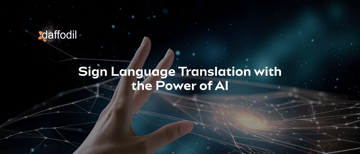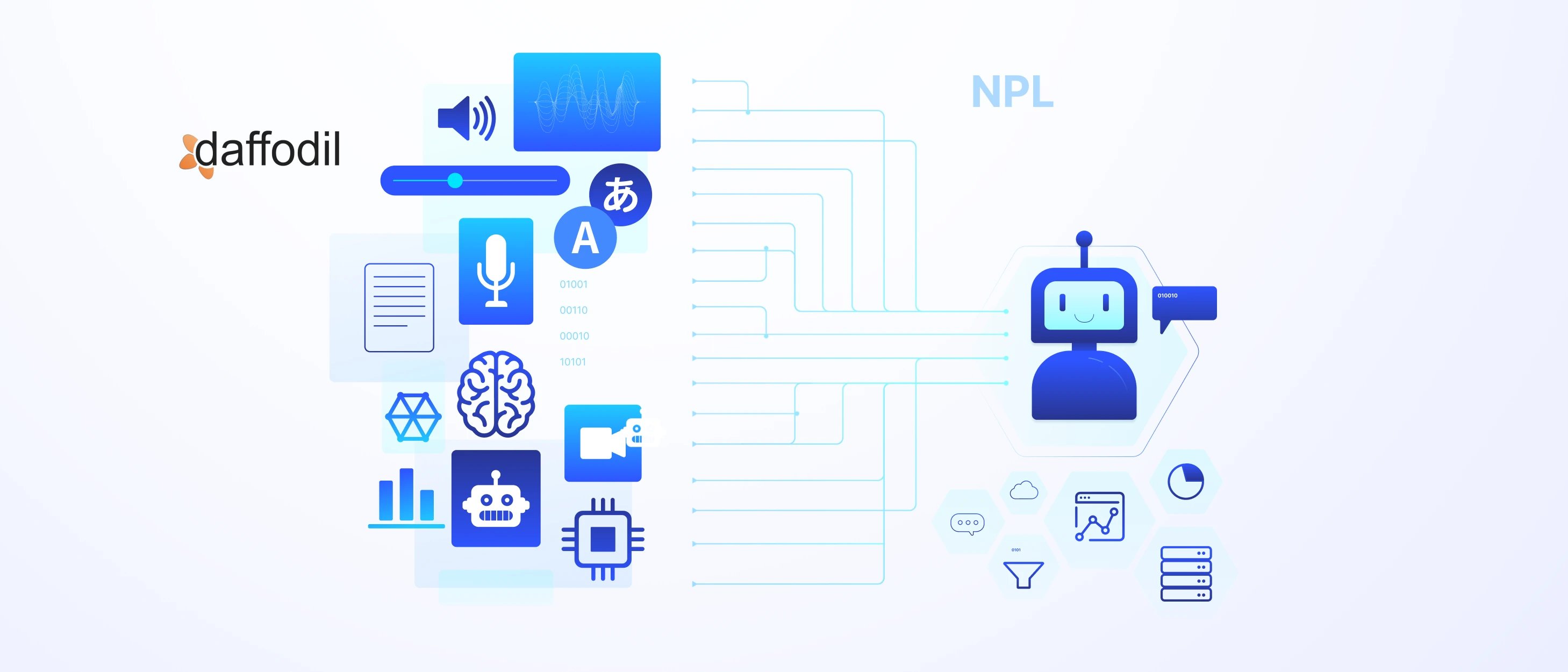
On average, a human speaks 700 words per day, which includes the words of actual value (i.e. words that have an intent to communicate to another person). Instant messaging, telephonic conversations, books, movies, songs, verbal (F2F) communication are amongst some of the common ways humans exchange their thoughts and information.According to the Wernicke-Lichtheim-Geschwind model, the human brain perceives the words through a specialized word reception center called Wernicke’s area, which is located in the left temporoparietal junction. Wernicke’s region then projects to Broca’s area of the brain which is called the word production center located in the frontal lobe. So when someone asks “How are you?”, the information is received by Wernicke’s area for interpretation, and further, it is Broca’s area that selects the words for a response- “I am fine, thanks!”
The human brain is supported by millions of neurons to comprehend words and take action. Ever wondered how machines process human language and respond back with the right set of words. For example, when you talk to your voice assistants, say Amazon Alexa; how it understands your words, intent, and gives a response which is quite satisfactory as well.
Well, the technology behind machines learning to talk like humans is Natural Language Processing (NLP). NLP is a subfield of linguistics, computer science, and artificial intelligence concerned with the interactions between computers and human language, in particular how to program computers to process and analyze large amounts of natural language data. NLP provides machines with the ability to process what is said, structure the information received, discover the necessary response, and then respond in the language that a user understands.
Voice assistants are not just one amazing use case of Natural Language Processing. This technology has a plethora of applications and in the latter segment of this blog, we are going to discuss them. Let’s get started.
1. Machine Translation
Machine Translation is the subfield of computer linguistics that involves the use of software applications to translate text or speech from one language to another. One of the best examples of machine translation is Google Translate which is known to translate over 100 billion words every day.

Image source: The Keyword
Google Translate uses neural machine translation which uses artificial neural networks (deep learning) to translate the whole sentence at a time. It uses the example-based machine translation approach wherein the system learns from millions of examples to improve the output.
However, the ambiguity of human language makes it difficult for the system to understand the words, sentences, and their intent. Natural Language Processing helps in overcoming this challenge.
2. Conversational User Interface
A conversational user interface is an interface for computers that emulates a conversation with a real human. For example, a chatbot.
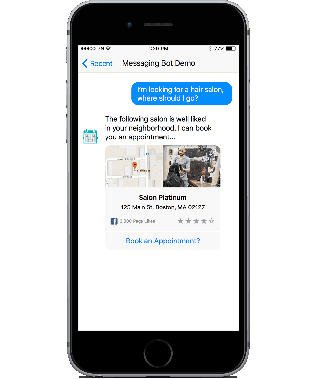 Chatbot provides an interface that enables machines and users to communicate through text. The history and evolution of chatbots have been impressive. From performing the role of a customer service agent with a predefined set of Q/A to becoming a mobile app alternative, chatbots have certainly come a long way.
Chatbot provides an interface that enables machines and users to communicate through text. The history and evolution of chatbots have been impressive. From performing the role of a customer service agent with a predefined set of Q/A to becoming a mobile app alternative, chatbots have certainly come a long way.
A chatbot is a text-based CUI that can act as a Q/A platform, allow users to place orders, give the status of their orders, sort information, book flight tickets, financial transactions, improve marketing campaigns, and a lot more. For performing complex tasks, a chatbot needs to understand user input, interpret it, and respond accordingly. This is where NLP plays an important role.

3. Text Prediction
Text prediction refers to the process of estimating the next word in a phrase or sentence. One of the popular and common examples of text prediction is Google Search. Just after typing a few letters the Google search bar automatically completes your search query. Or in any case that you have typed something incorrectly, the search gives you the correct and relevant results.
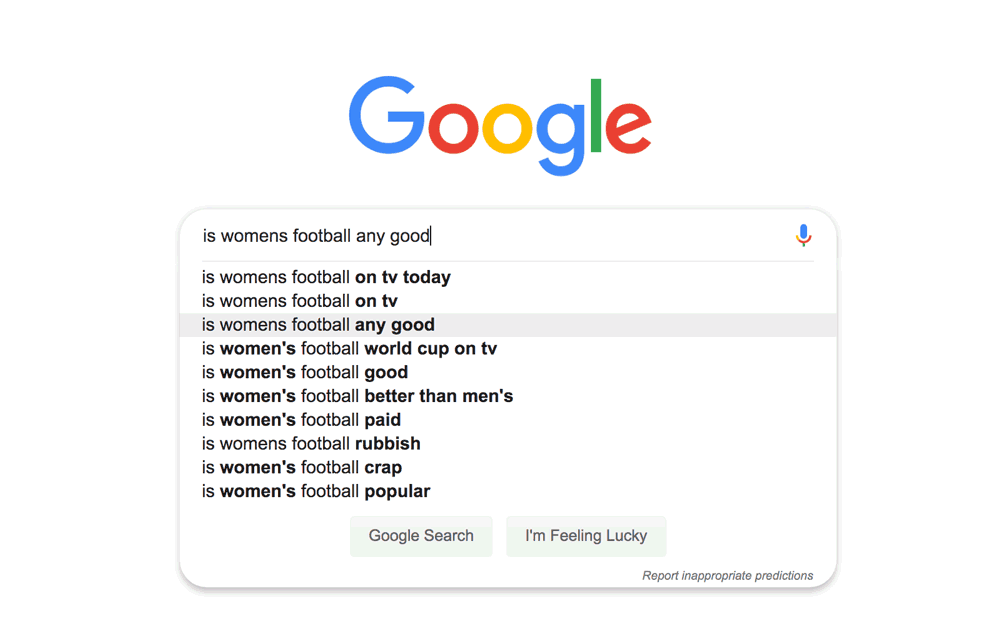
Google uses BERT (Bidirectional Encoder Representations from Transformers), a Natural Language Processing (NLP) algorithm that uses neural networks to create pre-trained models. These models are trained using a huge amount of unannotated text available on the web. The BERT algorithm helps the search engine to understand queries in a way similar to humans. Other than this, many other applications such as Google Docs, Gmail Compose uses NLP language models that help in text prediction.
4. Sentiment Analysis
Sentiment analysis is the process of interpreting and classifying emotions within text data. Usually having business-specific applications, sentiment analysis allows businesses to identify the sentiment of a customer towards services, brands, or products in online feedback (positive, negative, neutral). For its exceptional abilities, sentiment analysis is used in product analytics, market research, reputation management, precision targeting, marketing analysis, public relations, net promoter scoring, etc.
5. Text Classification
Unstructured text is everywhere. Emails, social media, websites, chat conversations are some of the areas where NLP text classification is an essential component and is rigorously used.
Text classification algorithms lay down the basis for software systems that process text data on a large scale. For example, email clients use text classification for tagging emails to certain categories so that they can be sent to the inbox or spam folder. Moreover, the automatic categorization of emails as Primary, Social, or Promotions in Gmail software is one of the finest examples of text classification using NLP.
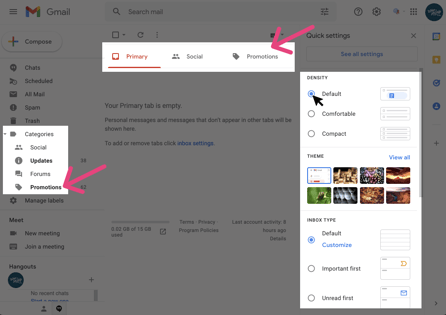
Image source: WiseStamp
Another area where text classification has a qualitative application is Discussion Forums. In such areas, text classification algorithms determine if a comment needs to be flagged as inappropriate. Along with this, platforms such as eCommerce, news agencies, content curators, etc. use text classifiers to automate content/product/service tagging.
5. Spell Check
A spell checker is a software application that identifies and corrects spelling mistakes or typos in a text. One of the popular examples of spell checker software is Grammarly. It’s a tool that integrates with a variety of text documents, automatically checks for spelling errors as the user continues to write, and suggests corrections.
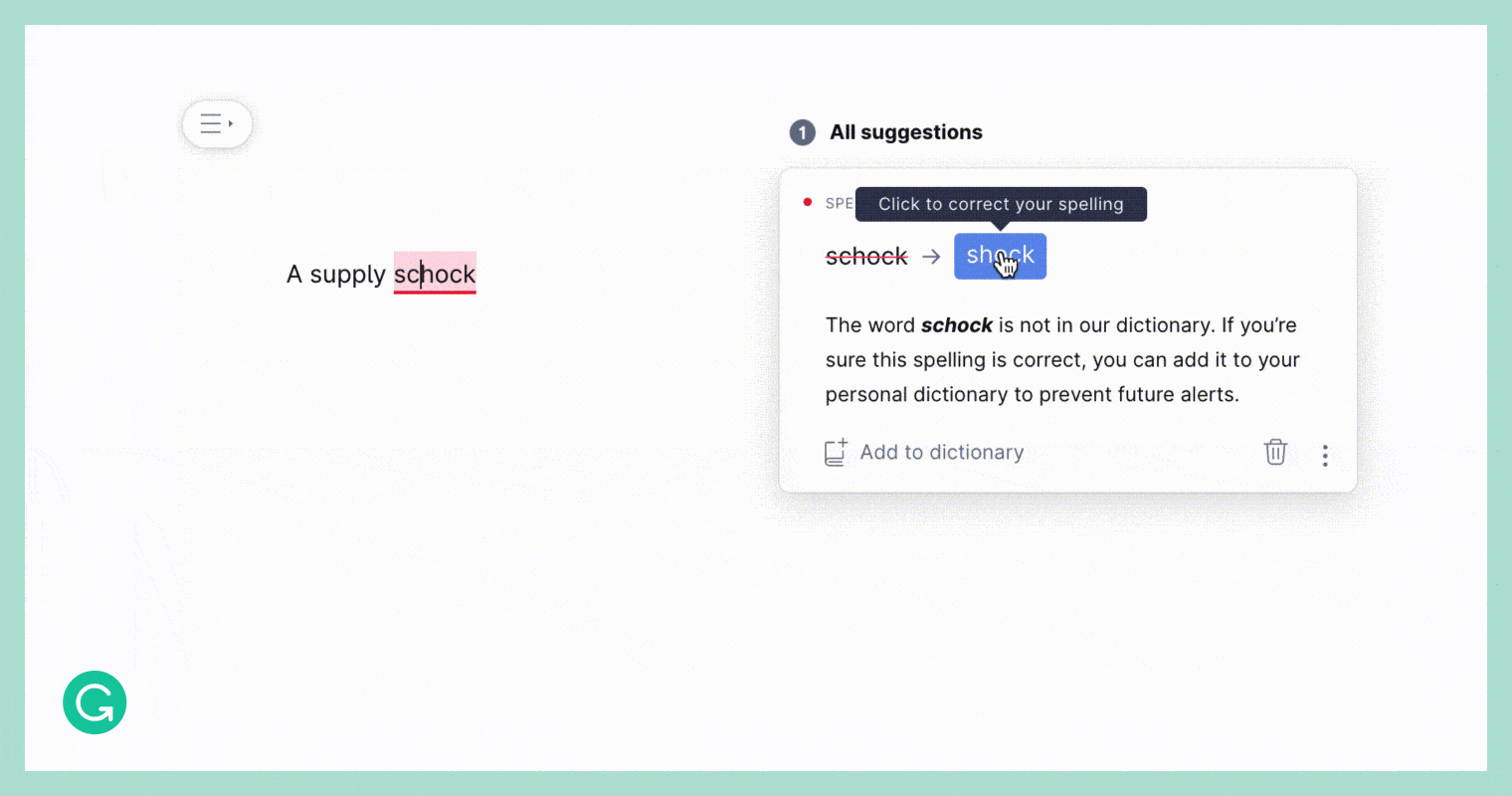
Image source: Grammarly
While Spell Checkers have immense importance in software applications that create and format word documents, they are also an important part of website search wherein there are high chances of users making spelling errors or typos, which may affect the search results.
6. Speech Recognition
Speech recognition technology has been there for around 70 years. The first-ever speech recognition system was introduced in 1952 by Bell Laboratories. Known as “Audrey”, the system could recognize a single-digit number. Later, IBM introduced “Shoebox” which could understand and respond to 16 words in English, which marked the usage of Natural Language Processing (NLP) for speech recognition.
Today, advances in NLP have introduced voice as the method of providing inputs to the system, other than clicking, typing, or selecting text. Voice Assistants like Cortana, Siri, Google Assistance, Amazon Alexa are some of the perfect examples of how machines are mastered to recognize the human voice, understand the intent, and respond accordingly. In fact, NLP is the core technology behind the Voice User Interface today.
Another common example of speech recognition is the speech-to-text feature in smartphones. While this is a default feature in many smartphones, there are several mobile apps that make this possible for users. The speech-to-text facility enables users to provide input through audio which is then converted into text.
Google Voice Search is another example of speech recognition wherein the users provide voice input to perform the search.

7. Character Recognition
Optical Character Recognition (OCR) is the process of converting images of handwritten, typed, or printed text into machine-encoded language. It is one of the commonly used approaches to digitize printed texts so they can be saved, edited, and searched electronically.
OCR and NLP combine to provide a range of benefits that can help businesses complete their document-related tasks such as read and recognize ID cards/passports automatically, enter data into various forms or CRMs, verify customer data gathered from various sources, instantly scan bank cards, indices, cheques, tickets, etc.
8. Social Media Monitoring
Social media now is not only used for personal communications but also a way to communicate with your favorite brands. People leave useful comments and feedback about their experience with the product or service on social media. These comments contain useful data and can help the brand generate some useful insights. This is a good example of the applications of natural language processing.
Businesses use various NLP techniques to analyze social media posts to get an idea of what their customers are thinking of them. Also, it is used by companies to understand the problems faced by their customers. Even the government uses social media to identify national security threats by analyzing the comments and posts.
9. Biometric Text Analysis
Beyond traditional methods of user authentication, NLP introduces a fascinating approach—biometric text analysis. By studying the unique patterns in the way individuals construct sentences, express ideas, and use language, systems can authenticate users based on their writing style. This innovative application provides an extra layer of security, particularly useful in scenarios where traditional biometric methods may not be applicable or sufficient.

10. Automatic Image Captioning
NLP expands its reach into the visual realm with automatic image captioning. This application involves not just recognizing objects in an image but generating coherent and descriptive captions. NLP models analyze the content of the image, understand relationships between objects, and translate this understanding into natural language. The implications are vast, ranging from aiding visually impaired individuals by describing images to improving content indexing for search engines.

Image source: MobiDev
11. Abstractive Text Summarization
NLP takes text summarization to new heights with abstractive summarization. Instead of extracting phrases, it generates concise and coherent summaries by understanding the underlying meaning of the text. One popular example is Editpad, which helps decision-makers distill essential information from extensive documents. NLP-driven abstractive summarization enhances efficiency in decision support processes, empowering users to make informed choices with a holistic understanding of complex information.
12. Information Extraction
Information extraction is a sophisticated NLP application that goes beyond simple keyword extraction. NLP models can analyze unstructured text and discern relationships between entities to generate structured information. For example, in a news article, an information extraction system could identify key details like the people involved, locations, events, and timelines. This is invaluable for creating databases, generating reports, and organizing large volumes of textual data.
13. Text Generation
Text generation is a sophisticated NLP application that involves the automatic creation of human-like text. This goes beyond simple templates or rules and relies on advanced language models trained on vast amounts of diverse data.
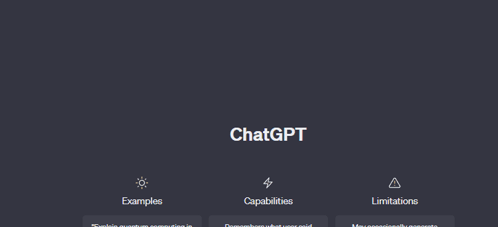
These models, such as OpenAI's GPT, can generate coherent and contextually relevant sentences or paragraphs. Language generation finds applications in chatbots, content creation, and even creative writing assistance, providing a seamless user experience by producing natural-sounding responses.
Natural Language Processing (NLP): Challenges and How to Overcome Them
The ambiguity associated with human language is one of the biggest challenges associated with Natural Language Processing (NLP). Therefore, understanding the requirement, training the models & algorithms right, and then combining the NLP technology with other AI technologies is the key to overcome the challenges associated with NLP.
At Daffodil, our AI experts understand the AI technologies and discover the most appropriate one for a project. Thus, if you have an idea where the implementation of AI technologies seems to be a challenge or you need technical aid to get started with it, set up a free consultation session with our AI application development experts.




